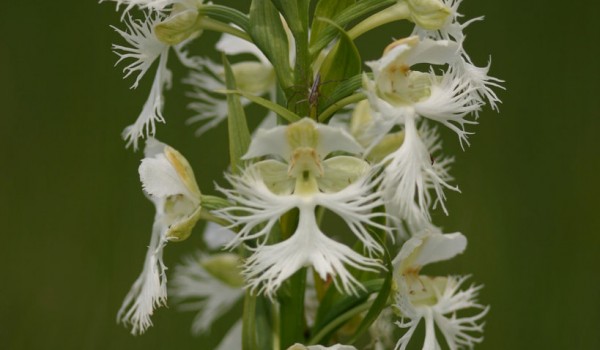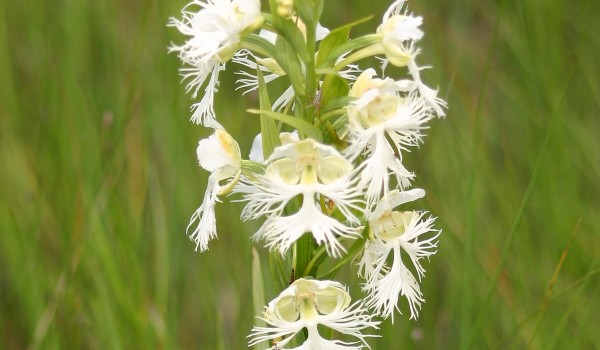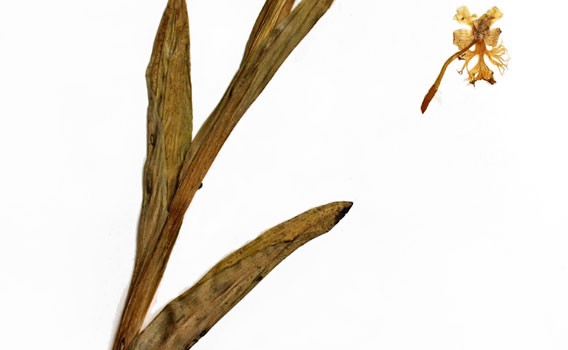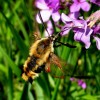Orchid (Orchidaceae)
Western Prairie Fringed Orchid
Platanthera praeclara Sheviak & BowlesThe orchid’s strong vanilla-like fragrance and white flowers attract Sphinx Moths as night-time pollinators. Small sacs of pollen stick to the moths’ heads and are deposited on other flowers. The moths are rewarded with nectar, which they lap up with their long tongues. This nationally endangered orchid only grows in wet meadows and calcium-rich sites in the grasslands of the mid-western United States and southern Canada. The largest population in the world is found in Manitoba.
Flower Colour:
- White
Flowering Season:
- Summer
Flowering Months:
- July
- June
Canadian Rarity Status:
Protected under Canada’s Species at Risk Act and Manitoba’s Endangered Species Act. The collection of wild plants and seeds is illegal on public lands.
Physical Appearance:
The Western Prairie Fringed Orchid is a perennial flowering plant that grows up to 1 m tall. It has 5-10 lance-shaped leaves that occur alternately along the stem, decreasing in size towards the top. Flowers can be numerous (between one and 33), are creamy white, and occur in an elongated cluster near the top of the stem. Each flower has a large, conspicuous petal that forms a lip with three deeply fringed segments, and a long, curved nectar spur that is greenish yellow in colour.
Gardening Notes:
Do not purchase wild-collected seeds or plants. Seeds and/or plants from nursery-raised stock may be available.
Canadian Distribution:
- Manitoba
Prairie Types:
- Tall Grass Prairie
Habitats:
- Prairies
- Roadsides
Moisture Conditions:
- Wet
Light Preference:
- Full Sun
Soil Preference:
- Alkaline
- Calcareous
- Clay









 Sphinx and Hawk Moths (
Sphinx and Hawk Moths (